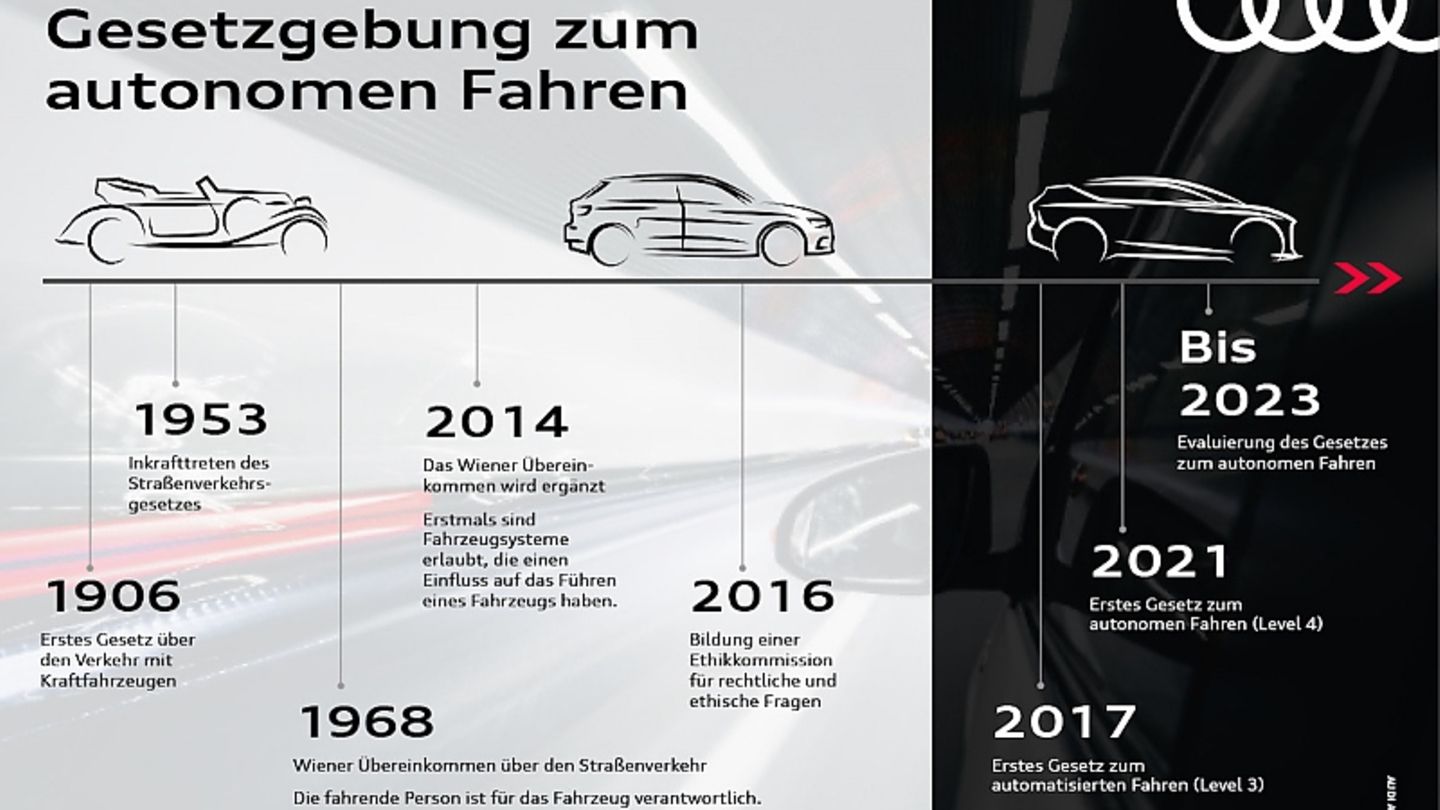Mercedes S-Class and EQS are the first models in Germany that will soon be able to drive highly automatically while the driver behind the wheel works on emails or surfs the web without looking at the road. However, the functioning of the so-called level three is still severely restricted. The competition has a lack of technology; others refer to the unclear legal situation.
The news hit the car scene powerfully at the end of last year – Mercedes is giving its top models EQS and S-Class overdue for the 2022 model year driver assistance level three – at least in a small corridor up to 60 km/h on the motorway. The competition is currently lacking the right answer and the other premium manufacturers in particular are failing. When the current Audi A8 was presented almost four years ago, autonomous driving functions were supposed to be activated a few months after the market launch. But even before the current A8 gets its facelift in these weeks, Audi shook its head. No level three driver assistance systems for the Audi A8. And BMW also rowed back months ago with its electric luxury SUV iX. It was originally supposed to be delivered with the level three driver assistance system at the market launch at the end of last year. But BMW didn’t manage to put the system into series production either, and the highly innovative iX is currently not available with the equipment detail that is so important. Also just a level two system: Cadillac Super Cruiser on thousands of miles of US highway.
Mercedes filled the painful gap left by the competition, because Tesla is still only available with a Level 2+ driver assistance system for the Model 3 or Y, even if Elon Musk is only too happy to refer to the system as autonomous driving. The Stuttgart car manufacturer with the star was the first to receive system approval based on the technical approval regulation UN-R157 and announced the level three driver assistance system for the two luxury models S-Class and EQS. But the possible uses are currently extremely limited, because the system can currently only be used in Germany. Prerequisite: you are traveling at a maximum of 60 km/h on a motorway in a traffic jam. “We have been working on realizing our vision of automated driving for many years. With the lidar-based system, we have developed an innovative technology for our vehicles that offers customers a unique, luxurious driving experience and gives them the most important thing: time. With We have now made a breakthrough with the approval of the authorities: we are the first manufacturer to go into series production of highly automated driving in Germany,” says Markus Schäfer, Board Member for Development at Mercedes.
Audi is also working flat out to bring driver assistance level three to production vehicles. However, according to the latest reports, this will probably take some time. “In Europe, by 2030 we can certainly expect to see functions such as the autobahn pilot on long-haul routes. But I don’t think we’ll be able to drive into the weekend asleep,” says Uta Klawitter, chief legal officer at Audi. For vehicles that are used privately, there is still a lack of technical regulations in Europe for the approval of a level 4 function. We do not expect this until 2024 at the earliest.
A few years ago, some car manufacturers had outbid each other when autonomous driving and, as an intermediate step, highly automated driving should come into production vehicles. The then Daimler AG and Volvo in particular promised a great deal of support for the driver at the end of the decade that had just started. But apart from taking your hands off the steering wheel for a few seconds, you can hardly get anything these days. “The biggest challenge will certainly be the technology itself. It must enable the highly automated driving function to function smoothly and, above all, safely. Because only then, and this is the second challenge, will society accept it and place its trust in it,” explains Uta Klawitter, “we need a harmonization of regulations on an international, at least on a European level.” At least in Europe, Germany has meanwhile become a pioneer; but in some states of the USA or China, the legal framework sometimes looks simpler. Nevertheless, the Mercedes Group is fighting to get approval for the USA as well. One thing is certain on all continents: only level four offers real relief for the driver and this is where driverless passenger transport by people movers and the logistics area on separate traffic areas should make the start.
Source: Stern
I am a 24-year-old writer and journalist who has been working in the news industry for the past two years. I write primarily about market news, so if you’re looking for insights into what’s going on in the stock market or economic indicators, you’ve come to the right place. I also dabble in writing articles on lifestyle trends and pop culture news.




